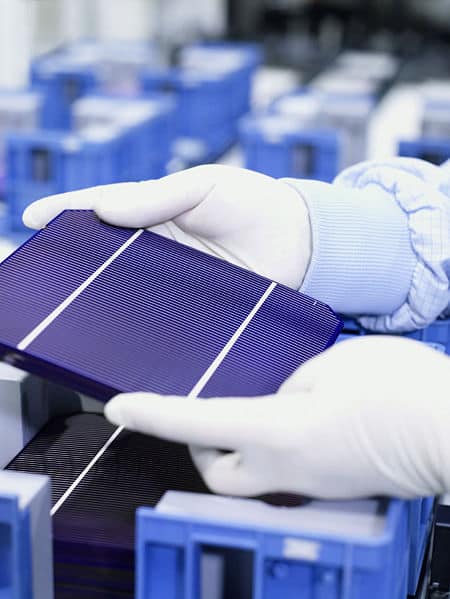In a discovery that may be a step forward for the development of more efficient solar cells, an international research team has succeeded in disproving today's most accepted theory to explain the behavior of a unique group of materials known as highly incompatible alloys

In a discovery that may be a step forward for the development of more efficient solar cells, an international research team has succeeded in disproving today's most accepted theory to explain the behavior of a unique group of materials known as highly incompatible alloys.
Highly mismatched alloys, whose development is still in the experimental stages, are combinations of elements that do not fuse together naturally through normal methods of crystal growth. Professor Rachel Goldman of the University of Michigan compares them to pasteurized milk, where high-fat cream and low-fat milk, which would naturally separate, are forced together through high pressure.
Innovative fusion methods, such as molecular beam epitaxy, allow researchers to combine separate elements. The results, Professor Goldman points out, are more surprising than receiving uniform milk.
"Very unsuitable alloys have extremely unusual properties," explains the researcher. "It is enough to add a handful of one of the elements to obtain a sharp change in the electrical and optical properties of the alloy."
Solar cells convert the energy from the sun's radiation into electricity by absorbing light. However, different materials absorb light at different wavelengths. The most efficient solar cells are those composed of several different materials, which together are able to capture a larger portion of the electromagnetic radiation that originates from the sun. The best solar cells available today still lack material capable of using the part of the sun's radiation that has wavelengths in the infrared range.
The research team prepared samples of the alloy gallium arsenide nitride - a very unsuitable alloy that includes nitrogen in it, which is able to use this untapped field of radiation. The researchers used the molecular beam epitaxy method to force the nitrogen to fuse with the other elements. The method involves volatilizing pure samples of the incompatible elements and fusing them together under vacuum.
Next, the researchers measured the alloy's ability to convert heat to electricity. They wanted to determine whether the concentration of 10 parts per million of nitrogen incorporated into the alloy disperses as individual atoms or as clusters of atoms. They found that in some cases the nitrogen atoms clustered together, contrary to the predictions of the most common theory today to describe these processes ("band anti-crossing").
"We showed experimentally that this theory is too simplistic to explain the electronic properties of highly incompatible alloys," adds the researcher. "It does not quantitatively explain some of their exceptional optical and electronic properties. Atom clusters have a significant effect on the electronic properties of alloy layers."
If researchers succeed in learning to control the creation of these aggregates, they will be able to prepare materials that will be more efficient in converting light and heat into electricity, says the researcher.
"The availability of thermo-electronic devices with higher efficiency will contribute to the development of more applicable methods for generating electricity from unused heat received in power plants and vehicle engines," says the researcher. The research findings were published in the scientific journal Physical Review B.

4 תגובות
I did not understand the context of the last paragraph to the rest of the article
to 2. Any body whose temperature is above absolute zero
Emits radiation - and it is used in night vision devices
Based on thermal imaging, on the other hand, not so
Produce a lot of electricity.
From what I know, infrared radiation also exists at night, does this mean that the cells with the new material will be able to generate electricity at night (of course at a much lower power and depending on the amount of radiation that will reach them)?
Sounds like an optimization problem, so evolutionary development can be resorted to